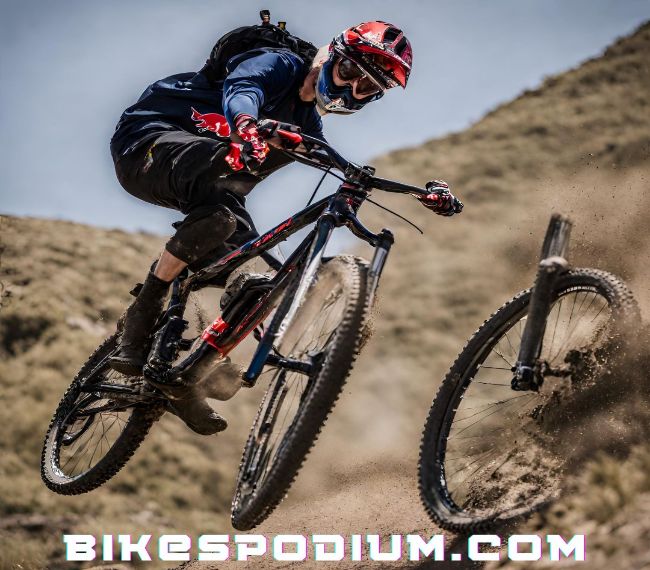Oil Slick MTB Parts
When it comes to enhancing the appearance of your bike, oil slick bike parts are a fantastic choice. The vibrant and iridescent colors of oil slick parts can instantly transform your bicycle and make it stand out from the crowd. In this article, we will explore the different types of oil slick bike parts available in the market and provide you with detailed information about each component.
1. Oil Slick Handlebars
Handlebars play a crucial role in controlling your bike and providing a comfortable grip. Oil slick handlebars not only offer excellent functionality but also add a stylish touch to your ride. These handlebars are available in various shapes and sizes, allowing you to choose the one that best suits your preferences and riding style.
Oil slick handlebars are commonly made from aluminum or carbon fiber. Aluminum handlebars are lightweight and provide a responsive feel, while carbon fiber handlebars offer enhanced vibration damping properties for a smoother ride. The oil slick finish adds a visually striking element to the handlebars, with its vibrant and reflective colors catching the eye.
When selecting oil slick handlebars, consider the width and shape that suits your riding style and body position. Wider handlebars provide increased stability and control, especially for off-road riding, while narrower handlebars offer a more aerodynamic position for speed-focused riding.
2. Oil Slick Stem
The stem connects the handlebars to the fork steerer tube and determines the reach and height of your bike’s handlebars. Oil slick stems provide a visually striking element to your bike’s front end. They are available in different lengths and angles to ensure a customizable fit for your desired riding position.
Oil slick stems are typically made from aluminum or carbon fiber, similar to handlebars. Aluminum stems are stiff and durable, while carbon fiber stems offer additional vibration damping properties. The oil slick finish on the stem adds a unique and eye-catching touch to your bike’s overall aesthetics.
When choosing an oil slick stem, consider the length and angle that suit your riding style and body position. A shorter stem provides quicker steering response, while a longer stem offers more stability. The stem angle can also be adjusted to fine-tune your riding position and comfort level.
3. Oil Slick Seatpost
The seatpost holds your bike seat securely in place while allowing for adjustments to find the perfect saddle height. Oil slick seatposts not only serve this functional purpose but also add a touch of brilliance to the overall aesthetics of your bike. With various sizes available, you can easily find a compatible oil slick seatpost for your bicycle.
Oil slick seatposts are commonly made from aluminum or carbon fiber. Aluminum seatposts are lightweight and durable, while carbon fiber seatposts offer enhanced vibration damping properties for a smoother ride. The oil slick finish on the seatpost adds a dazzling and reflective element to your bike’s appearance.
When selecting an oil slick seatpost, consider the diameter and length that match your bike’s specifications. The diameter should correspond to the seat tube diameter of your bike frame, and the length can be adjusted to achieve the desired saddle height. Additionally, some seatposts offer features like setback or zero-offset, allowing you to fine-tune your riding position.
4. Oil Slick Chainrings
Chainrings are an essential part of the drivetrain system that transfer power from your legs to the wheels. Oil slick chainrings are not only durable and efficient but also visually captivating. These chainrings come in different sizes and tooth configurations, allowing you to choose the perfect fit for your bike’s gearing needs.
Oil slick chainrings are typically made from aluminum or steel. Aluminum chainrings are lightweight and offer excellent stiffness, while steel chainrings provide durability and longevity. The oil slick finish on the chainrings adds a mesmerizing and colorful touch to the drivetrain.
When selecting oil slick chainrings, consider the number of teeth and the bolt circle diameter (BCD) that match your bike’s crankset. The number of teeth determines the gear ratio, with larger chainrings providing more speed and power, while smaller chainrings offer easier pedaling. The BCD determines the compatibility of the chainrings with your crankset.
5. Oil Slick Crankset
The crankset incorporates the chainrings and cranks, which convert the rotational motion of your legs into the linear motion that propels the bike forward. Oil slick cranksets not only offer excellent performance but also add a touch of uniqueness to your bike’s appearance. They are available in various lengths and configurations to cater to different riding styles and preferences.
Oil slick cranksets are commonly made from aluminum or carbon fiber. Aluminum cranksets are lightweight and stiff, while carbon fiber cranksets offer enhanced vibration damping properties. The oil slick finish on the crankset adds a stunning and reflective element to your bike’s drivetrain.
When choosing an oil slick crankset, consider the crank arm length that suits your leg length and riding style. Longer crank arms provide more leverage but may not be suitable for riders with shorter legs. Additionally, consider the crankset configuration, such as single, double, or triple chainrings, based on your desired gear range.
6. Oil Slick Pedals
Pedals are the contact point between your feet and the bike, making them a crucial part of your riding experience. Oil slick pedals not only provide a reliable grip but also enhance the visual appeal of your bike. These pedals come in different designs, including flat and clipless, catering to various riding disciplines and personal preferences.
Oil slick pedals are commonly made from aluminum or composite materials. Aluminum pedals offer durability and a solid platform, while composite pedals provide lightweight and improved grip. The oil slick finish on the pedals adds a captivating and colorful touch to your bike’s overall aesthetics.
When selecting oil slick pedals, consider the type that suits your riding style and preferences. Flat pedals offer a large platform for better stability and are suitable for casual riding or downhill biking. Clipless pedals provide a secure connection between your shoes and the pedals, enhancing power transfer and control, making them ideal for road cycling or mountain biking.
7. Oil Slick Brake Calipers
Brake calipers are responsible for stopping your bike and ensuring your safety while riding. Oil slick brake calipers not only provide reliable braking performance but also add a stunning visual element to your bike’s braking system. With different mounting options and compatibility with various brake types, oil slick brake calipers are an excellent choice for both road and mountain bikes.
Oil slick brake calipers are commonly made from aluminum or alloy materials. Aluminum brake calipers offer lightweight and responsive braking, while alloy brake calipers provide durability and strength. The oil slick finish on the brake calipers adds a vibrant and reflective touch to your bike’s overall appearance.
When selecting oil slick brake calipers, consider the mounting type (such as center mount or direct mount) and the compatibility with your bike’s brake system (such as rim brakes or disc brakes). Additionally, consider the brake reach, which determines the distance from the mounting bolt to the brake pads, to ensure proper brake alignment.
8. Oil Slick Wheelset
The wheelset is a crucial component of your bike that significantly affects its performance and overall look. Oil slick wheelsets are designed to provide exceptional performance and breathtaking aesthetics. With oil slick rims and spokes, these wheelsets create a mesmerizing effect when spinning, attracting attention wherever you ride.
Oil slick wheelsets are commonly made from aluminum or carbon fiber. Aluminum wheelsets offer durability and strength, while carbon fiber wheelsets provide lightweight and enhanced stiffness. The oil slick finish on the rims and spokes adds a dazzling and reflective element to your bike’s wheels, creating a captivating visual display while in motion.
When selecting an oil slick wheelset, consider the size (such as 700c for road bikes or 27.5/29 inches for mountain bikes), the rim width, and the compatibility with your bike’s brake system. Additionally, consider the spoke count, with higher spoke counts providing increased strength and durability.
9. Oil Slick Headset
The headset is responsible for allowing smooth rotation of the handlebars and fork. Oil slick headsets not only ensure smooth steering but also serve as a visual enhancement to your bike’s front end. With different sizes and types available, you can easily find an oil slick headset that matches your bike’s specifications.
Oil slick headsets are commonly made from aluminum or alloy materials. Aluminum headsets offer lightweight and precision steering, while alloy headsets provide durability and strength. The oil slick finish on the headset adds a vibrant and reflective touch to your bike’s overall aesthetics, complementing the other oil slick components.
When selecting an oil slick headset, consider the size (such as 1 1/8 inch or tapered) and the compatibility with your bike’s fork and frame. Additionally, consider the bearing type (such as cartridge or sealed) for smooth rotation and longevity.
10. Oil Slick Bottom Bracket
The bottom bracket connects the crankset to the bike frame and allows for smooth rotation of the cranks. Oil slick bottom brackets not only offer excellent durability and performance but also add a touch of vibrancy to your bike’s drivetrain. With various sizes and types available, you can find the perfect oil slick bottom bracket for your bike’s specific requirements.
Oil slick bottom brackets are commonly made from aluminum or alloy materials. Aluminum bottom brackets offer lightweight and efficient power transfer, while alloy bottom brackets provide durability and strength. The oil slick finish on the bottom bracket adds a colorful and reflective element to your bike’s drivetrain, enhancing its overall visual appeal.
When selecting an oil slick bottom bracket, consider the size (such as BSA or BB30) and the compatibility with your bike’s frame and crankset. Additionally, consider the bearing type (such as cartridge or ceramic) for smooth rotation and reduced friction.
In conclusion, oil slick bike parts provide a unique and eye-catching aesthetic to your beloved bicycle. From handlebars to bottom brackets, each component is designed to not only deliver outstanding performance but also enhance the overall appearance of your ride. By incorporating oil slick parts into your bike, you can create a visually stunning and personalized masterpiece that truly reflects your style and personality.
FAQ
1. What are oil slick bike parts?
Oil slick bike parts are components of a bicycle that have a vibrant and iridescent oil slick finish. These parts are designed to enhance the appearance of your bike and make it stand out from the crowd.
2. What types of oil slick handlebars are available?
Oil slick handlebars come in various shapes and sizes. They are commonly made from aluminum or carbon fiber and offer excellent functionality and a stylish touch to your ride.
3. What materials are oil slick seatposts made from?
Oil slick seatposts are commonly made from aluminum or carbon fiber. Aluminum seatposts are lightweight and durable, while carbon fiber seatposts offer enhanced vibration damping properties for a smoother ride.
4. What are the different types of oil slick pedals?
Oil slick pedals come in different designs, including flat and clipless. Flat pedals offer a large platform for better stability, while clipless pedals provide a secure connection between your shoes and the pedals, enhancing power transfer and control.



